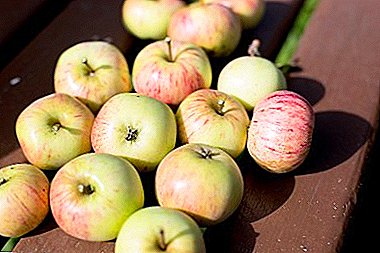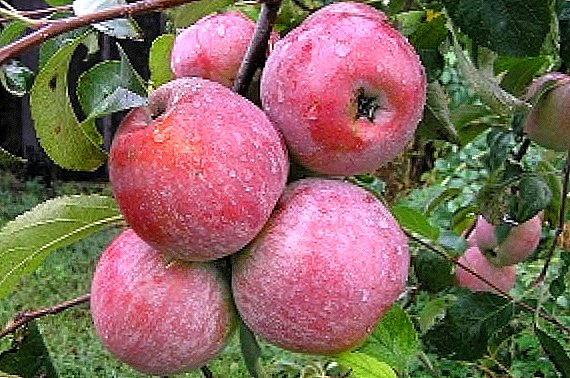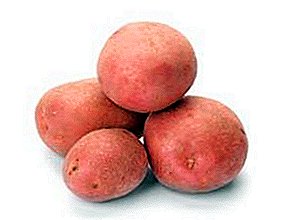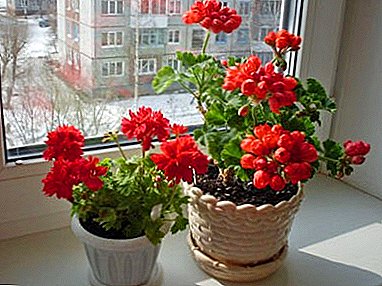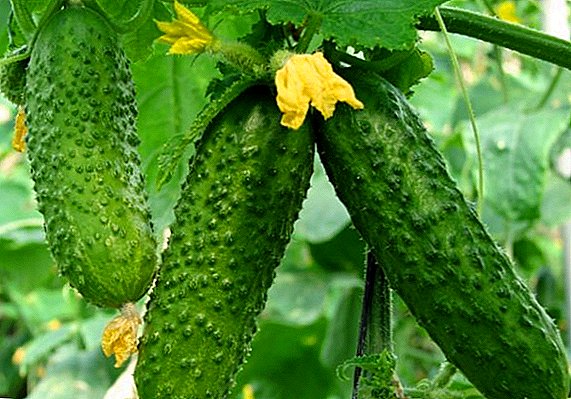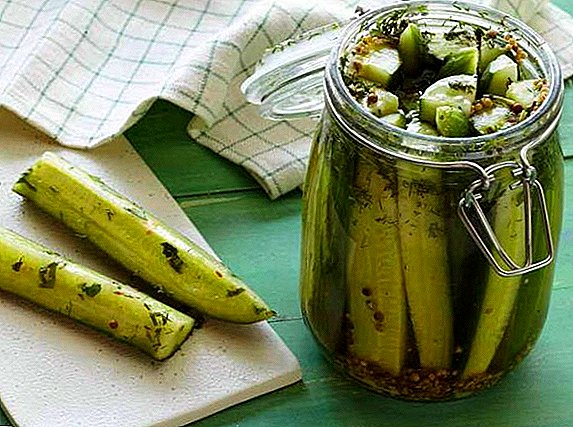 Peacock is rightly considered one of the most beautiful, if not the most beautiful, birds on the planet.
Peacock is rightly considered one of the most beautiful, if not the most beautiful, birds on the planet.
His appearance causes admiration and some amazement when it becomes known that we are talking about an immediate relative of an ordinary chicken.
This bird is an obligatory resident of any zoo.
But all of the above applies to males, but we know less about females.
Peacock female: how the bird is called and how it looks
Pava, the so-called female peacock, looks less colorful than her spouse. There are no bright colors in her coloring and she is deprived of a luxurious tail.  From the jewelery it is possible to distinguish only the likeness of a colorful necklace on the neck of blue or green color (depending on the breed). In contrast to the bright crown, crowning the head of a male, on the head of a female is only a modest dim crown.
From the jewelery it is possible to distinguish only the likeness of a colorful necklace on the neck of blue or green color (depending on the breed). In contrast to the bright crown, crowning the head of a male, on the head of a female is only a modest dim crown.
However, it should not be considered that pava is ugly, it is just not as bright as the male. Especially beautiful are the large expressive eyes of the pava on the neat head. Distinguish it from the male labor does not amount to: a dull color, the absence of tail feathers, smaller sizes.
Did you know? In the countries of the East, peacocks are a symbol of immortality, pomp and pride. In Oriental tales and legends, they are often referred to as messengers of the gods.
Indian (Common Peacock)
The Indian peacock has a blue color with shimmer. The neck and head are more pronounced in blue, and the back is green. The ends of the wings are painted orange. The length of the bird's body reaches 1.2 m, and the tail tail length is 1.6 m. The crest is blue.  Pava is much smaller in size, there is no tail at all, the color of feathers throughout the body is gray, the tuft is brown. The neck of the pava is blue with a beautiful steel sheen.
Pava is much smaller in size, there is no tail at all, the color of feathers throughout the body is gray, the tuft is brown. The neck of the pava is blue with a beautiful steel sheen.
There are two more varieties of the Indian peacock - black or black-shouldered and white. Previously, they were isolated in a separate breed, but Charles Darwin proved that these are just color mutations.
Find out what types of peacocks are. And also find out how the white peacock, the green peacock, and the common peacock look and live.
The differences in the size of the torso of the bird do not have, and as for the color, the black peacock has a black wing. The female of such a peacock is painted beige, the area near the tail is slightly darker.
White peacocks are not albinos, although they have an amazing white color. Males have blue eyes, and females have blue eyes. It can be said that the white peacock paw is a blue-eyed blonde.
Green
This species is noticeably larger than the Indian peacock. The male can be 2-3 m long. Beautiful tail feathers reach 1.65 m in length. The color of the bird can not be called green in the literal sense of the word, it is rather blue with a pronounced green tint. There may be blotches of the brown-red spectrum.  The color of the females is about the same color, but they are smaller in size, they even have an upper tail feathering, but much shorter. On the head of the pava there is a crest, but small and dull.
The color of the females is about the same color, but they are smaller in size, they even have an upper tail feathering, but much shorter. On the head of the pava there is a crest, but small and dull.
Important! Peacocks with proper keeping and feeding can live in captivity up to 20 years. Females become sexually mature at 3 years of age; by this time, the tail feathers of males fully grow.
African
The Congolese or African peacock is the only endemic living in Africa from the pheasant subfamily. The bird is still not domesticated, that is, as a result of many years of existence next to a person, it has not experienced any evolutionary changes.  The male reaches 65-70 cm in length, the female - 60-62 cm. The male is colored green with a bronze tint, the neck is black with a red throat, the head is black with a crest. Cocktails have an eye similar to that of Indian relatives.
The male reaches 65-70 cm in length, the female - 60-62 cm. The male is colored green with a bronze tint, the neck is black with a red throat, the head is black with a crest. Cocktails have an eye similar to that of Indian relatives.
Pava is colored green with light ebb and light stripes. The neck is red, the head has no plumage, brown.
Lifestyle and habitat Pav
The peas live in the same place as the peacock males, and feed, respectively, on the same. But their lifestyle is different, depending on the species.
Find out if a peacock flies and why the peacock spreads its tail.
Indian (Common Peacock)
The homeland of the bird is India and the island of Ceylon. There they can still be found in the wild, although birds prefer to hide from humans. Their favorite habitat - thickets of bushes or sparse forest. You can meet these birds on various plantations, where they wander to eat cereals.  They live in packs, since one male needs several pav. During the day, they hide in shady thickets, and with the onset of the evening they are looking for a night in the trees.
They live in packs, since one male needs several pav. During the day, they hide in shady thickets, and with the onset of the evening they are looking for a night in the trees.
Of the ration most preferred for them are cereals. Since India is a rice country, it is easy to guess which particular grass was chosen by these birds. Although they can eat other grains, as well as greens, small vertebrates or insects.
Green
The species became widespread in Indonesia (Java), Indochina, in the north and east of India, in Bangladesh, Myanmar, Thailand and some other parts of Southeast Asia.  The population of green peacocks is much smaller than the representatives of the common species. Currently considered an endangered species, they left 16-32 thousand individuals.
The population of green peacocks is much smaller than the representatives of the common species. Currently considered an endangered species, they left 16-32 thousand individuals.
Quite often in nature, 8-10 females are content with one male. The peas of this species do not differ much from the Indian in terms of nutrition: they prefer the same grain, greenery, etc. For living, they choose forest tracts, they can fly for short distances, run pretty fast.
Did you know? There are 3 species of green peacock: Indochinese, Burmese and Javanese, the last of which in 1940 became the national symbol of Myanmar (formerly Burma).
African
It lives in the basin of the Congo in the humid mountain forests. Kind of monogamous. Nests prefer to equip in the stumps, branches of trees. Pava lays from 2 to 4 eggs and sits on them. The male at this time takes care of her and protects the offspring. The incubation period is 25-27 days. 
Breeding and mating features
Birds reach sexual maturity by 3 years. At this time, the peas are ready to mate. The second half of spring and summer are most suitable for breeding females. In captivity, with the right content, each pawa is able to bring 6-12 eggs.
When a paua is ready to mate, the male begins to show her his beautiful mating dance. It is believed that the female does not necessarily choose the most beautiful male. The peacock dance is a kind of sign showing that the male is fine.
You will also be interested to learn how to breed peacocks at home, how to feed peacocks, what peacocks are sick with, and also whether you can eat peacock meat.
In order to finally convince the young lady, the male turns his back on her, demonstrating his virtues. If a paua finds it suitable, the birds start mating.
Thus, the males need a beautiful color to attract females, but pave itself is useless. Such coloring would go to her only to harm at that moment when she is sitting on eggs, since bright plumage can attract predators.
4 weeks after laying eggs, chicks hatch, not at all similar to those handsome men they will become. Nestlings develop much faster than their peers brought by another poultry. After 7-9 days, the chicks are already on the wing.  For normal development, they need proper feeding and fresh water. Young peacocks feed on the same food as their parents, although at first it will be a good idea to introduce dairy products, eggs and porridge into their diets. Up to 6 months, young animals should be given vitamins and anti-coccidioses.
For normal development, they need proper feeding and fresh water. Young peacocks feed on the same food as their parents, although at first it will be a good idea to introduce dairy products, eggs and porridge into their diets. Up to 6 months, young animals should be given vitamins and anti-coccidioses.
Peacocks in the home: basic rules
Peacocks need a separate aviary. Despite its appearance, it is quite aggressive creatures that can attack the birds that live in the neighborhood. The floor of the enclosure must be filled with a layer of sand (7-10 cm) and pebbles, which are needed by the birds for the normal functioning of the gastrointestinal tract.
Important! For the home maintenance of peacocks, a flock of four individuals is considered the norm - one male and three females. However, it may happen that the male chooses one female, then the other two pavas will remain out of work. Under natural conditions, this can not happen.
For the normal maintenance of birds at home should consider some important points:
- Be sure to proper nutrition.
- You can not pair close relatives - you will not receive chicks from such a connection.
- Under natural conditions, pava is a very responsible mother, but in captivity she sometimes ignores her direct duties, forgetting about her young. But if the pava still sat on the eggs, you can put up to 15 eggs under it.
- At a time when the female takes care of the chicks, special care is required, since the young take away a lot of strength from the mother.
- In the event that the pavas do not want to sit on the eggs, they are placed under her distant relatives - laying hens or turkeys.
- After 7 months, the males are seated so that they, because of their aggressive behavior, do not inflict injuries to each other, which can be quite serious.
 As it has already been said, the pea loses in appearance the peacock male, although among the females of the majority of domestic birds there are few of them equal in beauty. And if you add to this incredible grace, it becomes immediately clear - before you the real queen.
As it has already been said, the pea loses in appearance the peacock male, although among the females of the majority of domestic birds there are few of them equal in beauty. And if you add to this incredible grace, it becomes immediately clear - before you the real queen.

